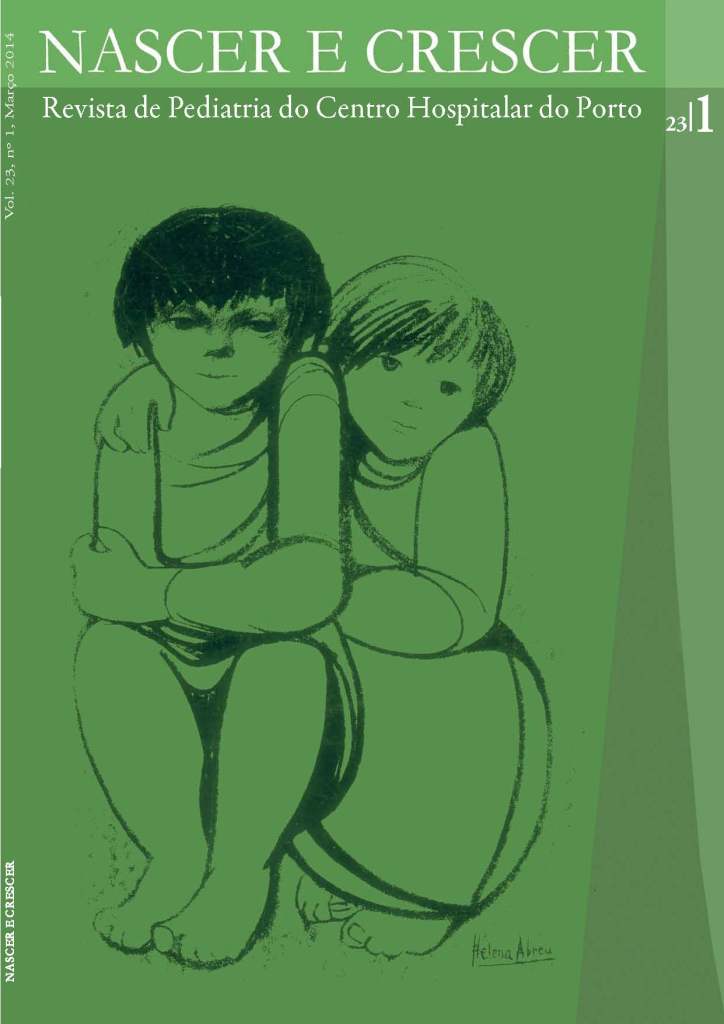Approach to renal clycosuria in children: a case report
DOI:
https://doi.org/10.25753/BirthGrowthMJ.v23.i1.8589Keywords:
Aminoaciduria, familial renal glycosuria, glucosuria, glycinuria, SGLT2, SLC5A2Abstract
Introduction: The accidental finding of glycosuria should lead to the exclusion of diabetes mellitus. In the absence of hyperglycemia, glycosuria is probably of renal origin. It can be isolated, as in familiar renal glycosuria, or it can be part of a hereditary tubular disorder such as Fanconi-Bickel syndrome or associated with an acquired tubular dysfunction. The renal and tubular function should be investigated.
Case report: The authors describe the case of a previously healthy five-year old child with persistent glycosuria of renal cause. The investigation showed the coexistence of elevated renal excretion of glycine.
Discussion: Familiar renal glycosuria and hyperglycinuria are caused by genetic defects in different renal tubular membrane transporters. The rare association of glycosuria and glycinuria was only described in one family in the 1960’s. The authors discuss the possible pathophysiologic mechanisms of this association and the importance of studying other tubulopathies in a child with glycosuria as it has prognostic and clinical management implications.
Downloads
References
Simfukwe M, Sabatini S, Daphnis E. Isolated Tubular Diseases. In: Schrier RW editor. Diseases of the Kidney and Urinary Tract. 8thed. Philadelphia PA: Lippincott Williams & Wilkins; 2007. p.570 -91.
Zelikovic I. Aminoaciduria and glycosuria. In: Avner ED, Harmon WE, Niaudet P, Yoshikawa N, editors. Pediatric Nephrology. 6th ed. Berlin Heilderberg: Springer -Verlag; 2009. p.889 -927.
Santer R, Calado J. Familial Renal Glucosuria and SGLT2: From a Mendelian Trait to a Therapeutic Target. Clin J Am SocNephrol. 2010; 5:133 -41.
Bhimma R. Renal Glucosuria. Medscape Reference. Março, 2013. Disponível em: http://emedicine.medscape.com/article/983678 -overview.
Scholl -Bürgi S, Santer R, Ehrich JH. Long -term outcome of renal glucosuria type 0: the original patient and his natural history. Nephrol Dial Transplant. 2004; 9:2394 -6.
Magen D, Sprecher E, Zelikovic I, Skorecki K. A novel missense mutation in SLC5A2 encoding SGLT2 underlies autosomal -recessive renal glucosuria and aminoaciduria. Kidney Int 2005; 67:34 -41.
Miorin E, Ciana G, Crovella S, Colonna F. 250 Novel Compound Heterozygous Mutations in SGLT2 Gene are Responsible for Autosomal Recessive Renal Glucosuria. Pediatr Res 2005; 58:397. doi:10.1203/00006450 -200508000 -00279.
Scriver, CR. Familial renal iminoglycinuria. In: Scriver CR, Beaudet AL, Sly WS, Valle D, editors. The Metabolic Basis of Inherited Disease. 6thed. New York: McGraw -Hill; 1989. p.2529 -38.
Bröer S, Bailey CG, Kowalczuk S, Ng C, Vanslambrouck JN, Rodgers H, et al. Iminoglycinuria and hyperglycinuria are discrete human phenotypes resulting from complex mutations in proline and glycine transporters. J Clin Invest 2008; 118:3881 -92.
Oberiter V, Pureti{ Z, Fabeci{ -Sabadi V. Hyperglycinuria with nephrolithiasis. Eur J Pediatr 1978; 127:279 -85.
Kaser H, Cottier P, Antener I. Glucoglycinuria, a new familial syndrome. J Pediatr 1962; 61:386 -94.
Downloads
Published
How to Cite
Issue
Section
License
Copyright and access
This journal offers immediate free access to its content, following the principle that providing free scientific knowledge to the public provides greater global democratization of knowledge.
The works are licensed under a Creative Commons Attribution Non-commercial 4.0 International license.
Nascer e Crescer – Birth and Growth Medical Journal do not charge any submission or processing fee to the articles submitted.


